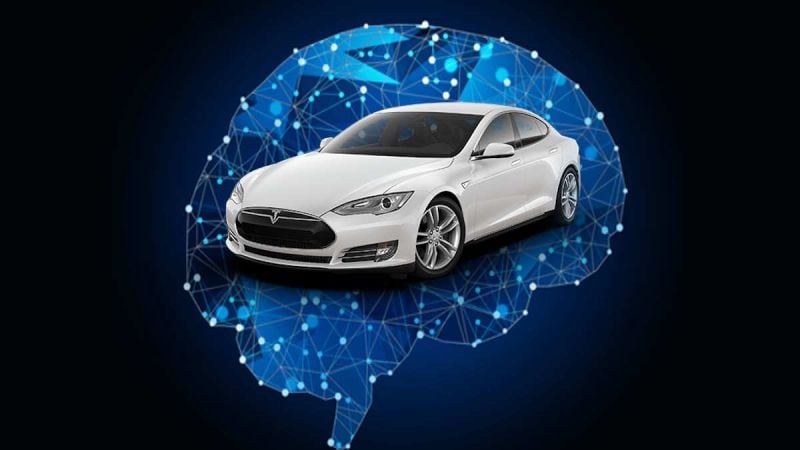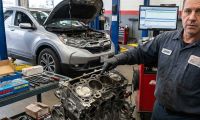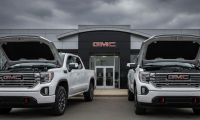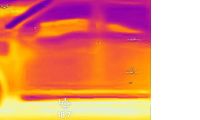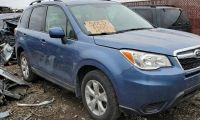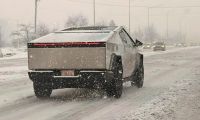Tesla Does a Ton While You Are Driving
You may not realize it, but there is a giant technical brain at work when you use navigation inside a Tesla vehicle. This brain is doing over 15 different calculations simultaneously to calculate the amount of range and ensure you have the most efficient, smooth, and safe ride as possible.
Your Tesla will calculate how much battery you have and how much you will use during your trip and upon arrival to your destination. This may seem like a simple thing to calculate - just take the miles or kilometers and give each battery percentage a number of miles and there you go - but it's much more complex than this.
1: Your Tesla is calculating wind speed and direction while you are driving and updating this during your journey. Wind going at your back and pushing you instead of wind that is coming toward you will have a different effect, and Tesla calculates the exact effect it will have!
Tesla recently did some testing in harsh conditions recently, and I'm sure the wind in these areas was taken into account and stored for future use.
2: Elevation and grade is calculated when considering how much battery your Tesla will use. When I go uphill, I can see the trip will take more batteries to use in my Model 3 RWD. When I have a downhill trip, sometimes I will arrive at the destination with MORE battery percentage than when I started.
I remember a trip in my 2022 Model 3 RWD that was mostly down hill - I gained 6% battery during the trip!
3: Your Tesla will calculate traffic speed to see how that will affect your journey to your destination. Also, the faster you are traveling, the more battery will be used. I try not to go too much over 69 or 70 miles per hour because it uses more battery to do so.
If you drive the Model X Plaid at super high speeds, that will definitely drain your battery fast.
4: Your Tesla will also calculate the average acceleration and deceleration used during the course of travel on the route you have planned. Deceleration causes regenerative braking, which puts energy back into the battery.
5: The ambient temperature of your Tesla and battery is taken into consideration when calculating how much battery will be used when navigating your Tesla. Warmer batteries and temperatures will reduce the battery less.
Tesla batteries are pretty resilient and also don't degrade that much over time - despite what people think.
6: Humidity and pressure are calculated. These have an effect on how much battery power gets used.
7: Solar load and cloud cover affects your battery usage. The reason is that the sun shining on the car will warm it up, which uses less battery.
8: It calculates the initial battery % before you take your journey. This battery % is used in a mathematical calculation with all the other factors taken into account to determine how much battery will be used.
You May Also Be Interested In: One day, Tesla prices will be absurdly cheap.
What Else Tesla Is Doing For You
9: Initial battery temperature is taken into account. A battery that starts off cold is going to use more energy, while a battery that starts off warm will use less energy. A warm battery that is about to embark in very cold weather will also use more energy over time as it deals with the cold temperature.
Tesla vehicles are vigorously tested in freezing temperatures.
10: Your gross combined vehicle weight will affect your battery usage, and Tesla also takes this into account. I would think that driving a large Cybertruck with tons of stuff being hauled is going to use way more battery than a Cybertruck without anything or any passengers in it.
11: Rolling resistance also plays a role in how much your Tesla battery uses. Tires that are inflated more will have less resistance, and tires inflated less will create more resistance. Getting a good pair of tires will also help your Tesla get better mileage.
12: The aerodynamic drag coefficient is taken into account. The better the shape of a car is at reducing air resistance, the better and more easily forward motion is achieved.
A Model 3 gets about 200 Wh/mile and an Aptera will get about 100 Wh/mile. The Aptera is going to be much more efficient than any vehicle. In fact, the Aptera vehicle will have the best drag coefficient of any vehicle on the market - and it won't even be close.
13: HVAC consumption plays a role. When I use the air conditioning or heating, my battery definitely gets used a lot more, and it shows in the calculation. In fact, during the initial calculation of battery usage, Tesla assumes some HVAC use. If you don't use it, your battery percentage shown at your arrival will go up during your trip.
Tesla has HVAC as a biodefense weapon mode in the Model Y and now the new Model 3 Highland.
14: There are additional vehicle-specific energy consumption things that are taken into account, such as a bike rack or something on top of your car. These will be factored in.
15: Battery preconditioning is calculated. You can wait to drive while your battery heats up, and it will take the energy usage for that into account. This is useful to do in cold weather, as a warm battery will use less energy over the course of a trip.
In Other Tesla News: Tesla Model 3 handing in the harshest environmental conditions.
Your car does the math for you.
When calculating a route & battery % on arrival, Tesla navigation takes into account:
- Wind speed & direction
- Elevation/grade
- Traffic speed
- Avg acceleration/deceleration
- Ambient temperature
- Humidity & pressure
- Solar load & cloud… https://t.co/nTDJczTthu pic.twitter.com/gbt6PCFIH7— Tesla North America (@tesla_na) November 14, 2023
What do you think about all the things Tesla is doing for you behind the scenes while you navigate? Did I miss anything?
Share this article with friends and family and on social media! Thank you so much for your support!
Hi! My name is Jeremy Johnson, and I am a Tesla investor and supporter. I first invested in Tesla in 2017 after years of following Elon Musk and admiring his work ethic and intelligence. Since then, I've become a Tesla bull, covering anything about Tesla I can find, while also dabbling in other electric vehicle companies like Aptera. I cover Tesla and EV developments at Torque News. You can follow me on X.COM or LinkedIn to stay in touch and follow my Tesla news coverage. Image Credit, Tesla, Screenshot


